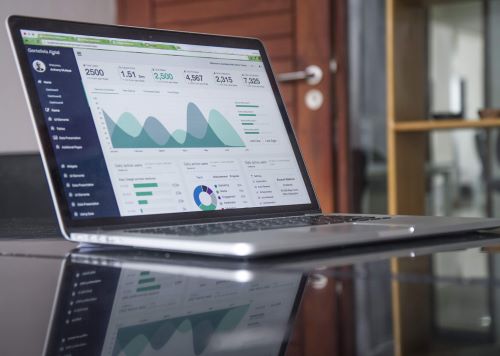The top performers, market leaders, and business outliers of today and the foreseeable future all have one thing in common: they are data-driven enterprises.
Do you want to be one of them? That can only happen once you learn how to embed data analysis into your company and integrate it into your marketing, sales, and strategic decision-making.
What is data analysis?
Data analysis is a fairly generic term that gets thrown around a lot. So, let’s get technical for a moment. Tech Target defines it as “the process of examining data sets in order to find trends and draw conclusions about the information they contain.”
Raw data is processed with algorithms and other analytics techniques. The methods used depend on what insights are needed.
Data analytics is used to find facts and insights otherwise obscured within raw data. This can be metrics, trends, patterns, correlations, causations, and other intelligence.
Data analytics and its insights can be integrated into applications and workflows.
Why data analysis is used
Data analytics makes strategic planning, decision making, and daily work activities more precise. It provides market clarity and deep customer insight.
These insights facilitate customer campaigns and extend your capabilities to create effective customer outreach. The clarity provided reduces errors, lowers waste, and drives business efficiency. This then drives revenue, growth, and profits.
McKinsey surveyed 700 senior sales and marketing executives to assess how integrating customer-focused analytics impacted their companies. They found that implementing customer analytics resulted in 115% higher ROI, 112% higher sales growth, and 93% more profit. And integrating data analytics into the entire business can easily bring revenue growth of 15% to 20%.
When it comes to marketing and sales, data analysis is significant, essential, yet still underrated. It directly contributes to performance, profit, and competitiveness. At this point, every healthy business must rely on it.
How is data analysis used?
Data analytics can be used wherever data is generated and that’s almost everywhere. You can generate it within your business in the applications and tools you use or acquire it from external sources like market research, customer feedback, surveys, and questionnaires.
Data analysis is used in four ways. Those are:
- Descriptive
- Diagnostic
- Predictive
- Prescriptive
Descriptive data analysis
Descriptive analytics looks at what is happening or what happened over time. It detects patterns and meaning in historical data to show you what’s going on.
This is the most simple, basic form of data analysis. The insights you get are general descriptions, statistics, metrics, trends, and assessments.
However, descriptive data analysis is both essential and fundamental. It lets you quickly understand raw data and it provides the basis for gathering deeper insights.
Diagnostic data analysis
Diagnostic analytics looks at why things happened. It analyses historical data to find the causes for problems, errors, trends, correlations, variable relationships, and other data phenomena.
It primarily uses data mining, data drill-down, data discovery, and correlation analysis. Diagnostic analytics is used to understand anomalies, understand relational correlations, and find hidden variable relationships.
It’s a step more advanced than descriptive analytics and starts to provide you with some real business intelligence.
Predictive data analysis
Predictive analytics looks at what is likely to happen. It processes historical data, transactional data, and real-time data with statistical algorithms, predictive forecasting modelling, artificial intelligence, and machine learning to predict future outcomes.
Those outcomes might be business performance, demand levels, consumer behaviours, or other occurrences.
In business, predictive analytics is often used in finance, marketing, inventory management, sales, and customer service.
Prescriptive data analysis
Prescriptive analytics looks at what actions should be taken. It uses forecasting and modelling to analyse various outcomes then recommend the actions that are likely to deliver a desired result.
This is currently the most advanced form of data analysis. According to Gartner, prescriptive analytics techniques include “graph analysis, simulation, complex event processing, neural networks, recommendation engines, heuristics, and machine learning.”
Prescriptive analysis delivers actionable recommendations and guidance. It’s used throughout business, including in marketing, supply chain management, revenue management, business process optimization, and more.
How can data analysis be used in your digital marketing strategy?
Data analytics is primarily applied to marketing by tracking customers, targeting them, and forecasting their behaviours. These processes and their insights can be used across the buyer’s journey, marketing funnel, and in virtually every marketing activity.


Tracking customers with data analytics
Almost every application or platform generates data based on how users interact with it. And much of this can be accessed through data syncs, app integrations, or API connections.
Once you can access this and put it together, you get a full picture of the customer’s behaviour, actions, responses, sentiment, and engagement across the entire buyer’s journey.
You can use these insights to determine your ideal channel, assess how effective current marketing is, and generate competitive insights.
Targeting customers with data analytics
Data analytics enables you to precisely target the prospects and customers you want. You can easily reach a particular market segment or demographic group. But with data analytics, you can also target customers based on various attributes such as behaviours, sentiment, psychographic profile, buying history, and likeliness to purchase.
This can work in two directions. Various platforms and applications can use data analytics to reach your ideal prospect or customer. Data analytics can also provide you with deep information on your target’s attributes.
These insights and targeting capabilities should be used to inform and guide your work.
Forecasting customer behaviour with data analytics
Predictive data analytics lets you forecast and anticipate customer needs, sentiments, responses, and behaviour in general.
You can use this to predict demand, craft effective marketing, and pick the right time, place, and method to reach them.
This lets you stay one step ahead of the market. It’s a capability that Harvard Business Review sees as critical in today’s unpredictable world environment.
Three ways to use data analytics in marketing
So, what does data-driven marketing actually look like in action? Let’s take a look at three examples of what you can do.
1. Personalization and hyper-personalization
Today’s business environment is shifting towards an empathetic and personalized way of connecting with customers.
This trend is customer-driven. At this point, we’re all used to having things that are hyper-convenient and tailored to our preferences.
Behaviour analysing apps like Netflix, Uber, and Amazon have all helped train consumer experience expectations in this direction.
Areas to use hyper-personalization are as follows:
- Custom and relevant advertising
- Unique landing pages
- Recommendation engines
- Dynamic pricing and offers
- Service chatbots
- Omnichannel customer service
- Pre-populating applications or forms
- Real-time product notifications
- Loyalty programs and re-engagement
2. Understand your audience
Marketers use data analytics to track a target’s interactions and behaviours. You can get full visibility of their responses, behaviours, and sentiment across several platforms.
This lets you understand your intended prospects, buyers, and audience far deeper and more intimately than ever before.
You can then build data-based customer personas that are accurate and effective.
Data-based buyer personas can tell you:
- what drives a buyer
- what they expect from you
- what they think and feel about your offer vs a competitors
- what it takes to move them to buy
This data can come from several places, including purchase histories, market research, customer
surveys, applications, and more.
3. Message refinement and channel alignment
Data should be used for messaging and channel analytics. This will let you:
- optimize your marketing material
- optimize for profits, revenue, and ROI
- detect upcoming trends
- pick the right channels
Messaging analytics can pick up on your customer’s syntax and sentiment, detect impactful keywords, and tell you what delivers the highest ROI.
You can also detect early shifts in a market’s emotions, interests, and needs so you can tap into burgeoning trends.
Marketers using real-time data analytics can integrate this into their platforms with dynamic messaging capabilities or by quickly reworking core material.
As far as channels go, analytics tells you exactly where your messages should go. Not every platform is suitable for various offers or brands as customers have different mindsets and mental frames when using different platforms.
You can also use analytics to determine where funds are best spent. You may discover that certain channels aren’t as profitable as they are. Or that certain channels are better for attracting customers with a higher lifetime value or ones who are lower maintenance.
Once this is put together, you can optimize your entire marketing funnel for more revenue, higher profits, and great ROI.
How to acquire key data analytics skills
Data analytics is the key to pulling ahead of the competition. Today’s thriving outliers and leaders are all data-driven and have learned to embed data analytics into their processes, workflows, customer interactions, strategic planning, and decision making.
The ones left behind have either failed or refused to adapt. McKinsey notes that the performance gap between data leaders and laggards is growing.
If you want to be ranked among the outliers, then you – and anyone else on your strategy or marketing team – need to gain core data analytics skills.
So, what’s the best way to get up to speed? That’s by taking a structured data analytics course. One specifically intended for marketers and growth drivers.
You can do that now by enrolling in our data analytics short course. Contact us for more information.




